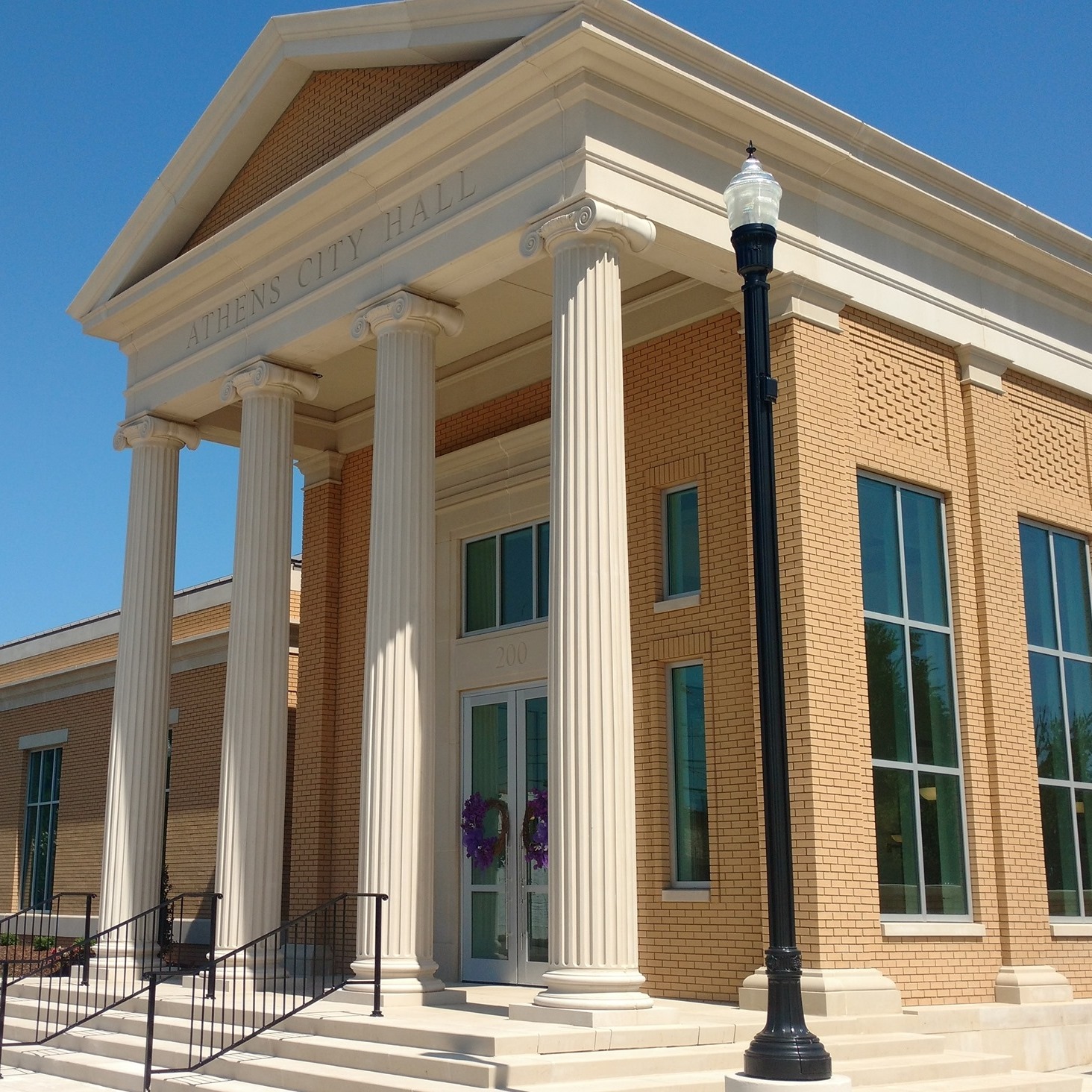Mystery of Bell’s grave solved
Published 7:00 pm Saturday, June 7, 2008

- Lt. Col. James Walker and Austin High School JROTC Executive Officer Emily Merrill plant flags on the grave of Pvt. George Bell, a recipient of the Distinguished Service Cross, the nation’s second highest military honor. Bell is buried in Oak Grove CME Church Cemetery.
The final resting place of Pvt. George Bell, a Limestone County World War I veteran who was awarded his nation’s second highest military honor, the Distinguished Service Cross, was a mystery until Friday.
“There he is—there he is,” cried Lt. Col. James Walker, U.S. Army retired, as he knelt at Bell’s graveside in Oak Grove Christian Methodist Episcopal Church Cemetery and planted an American flag.
Walker, a JROTC instructor at Austin High School, has been searching for Bell’s grave for five years after learning through Internet research that Limestone County was the home of two black World War I Distinguished Service Cross recipients.
Walker is a determined man. He believes in military honor and he believes in honoring the accomplishments of distinguished black citizens.
He will not be deterred from either course.
The 1963 Trinity High School graduate retired from the Army in 1985. Eleven of Walker’s Austin High cadets have been accepted to West Point and one to the Air Force Academy.
Walker didn’t start out searching for Bell’s grave. He began searching for fellow Distinguished Cross recipient Van Horton.
“When I first got out of the Army in 1985, I was riding around the southwest part of the county with a cousin of mine, James Dobbins, looking for some of the places we knew growing up,” said Walker. “He told me about a Horton boy who had ‘won a star’ and jealousy over a black person winning it started that 1946 race riot here.
“Well, I had never heard that and I immediately thought he must be talking about the Silver Star, the nation’s third-highest military honor,” said Walker.
He said he talked to several Horton family members, but none knew of an ancestor named Van Horton who had been highly decorated in World War I.
“I sort of got to thinking that my cousin James was wrong about Horton, but then when my mother, (the late Limestone County teacher Bessie Walker) told me that I had an ancestor who fought in the Civil War, I didn’t believe her, but I later found that it was true,” said Walker.
Walker unearthed a document from the American Missionary Association in which L. Maynard Catchings had written about an account of the Aug. 10, 1946, Athens race riot as told by the Rev. J. Royster Powell in an Aug. 26, 1946, interview. Powell had been pastor of a Baptist church in Athens at the time of the riot.
He told of coming into Athens on the bus from Nashville at about 5:30 p.m. that day and trying to hire a taxi to take him to his church:
“He tried three times to get a taxicab,” Catchings writes. “The driver of one said, ‘I ain’t riding no niggers today,’ and another said, ‘Get out of town nigger,’ and the third driver told him what was going on and to ‘walk calmly on to his church.’”
Reasons for riot
Powell conjectures on the reason for the riot being that young whites were angered by blacks taking jobs they thought should go to them. Powell notes that, “The leading class of white people were all right. They did not sanction the outbreak.” He said that white merchants were disturbed by the riot, which he said involved some 100 people, because blacks were good customers.
“Negroes who have cars now shop in Huntsville,” Powell noted.
Powell even conjectures that the riot was a “good thing” because it showed the black population who their friends were and because it showed white merchants “the dangers to good relationships.”
Powell noted that the two greatest needs of blacks in 1946 Limestone County were education and health care. There were few black schools in the segregated South and “in all Athens there is no hospital or clinical facility for Negroes. The one Negro doctor does not even have an office and white physicians answer Negro calls at their leisure.”
While Powell makes some pointed observations in his account, at no place does he mention that an argument over a black man being awarded one of the nation’s highest military honors sparked the riot.
“But my cousin James Dobbins kept insisting that is what started the whole thing,” said Walker. “And it sort of makes sense. You know, the war had just ended and no black who fought in World War II had been awarded such an honor. In fact, it was a common belief that the black soldier wasn’t worthy.”
That erroneous belief was fueled from the top on down. In 1925, the memoirs of Maj. Gen. Robert L. Bullard, commander of the American 2nd Army, contained excerpts from his diary in which he had written: “Poor Negroes! They are hopelessly inferior…” In another entry he wrote, “The poor 92nd Negroes wasted time and dawdled where they did attack…”, and in still another entry Bullard wrote, “If you need combat soldiers, and especially if you need them in a hurry, don’t put your time upon Negroes.”
It wasn’t until nearly 20 years after his retirement from the Army that Walker happened to do an Internet search on the American Negro in the World War that he finally found records of Van Horton, who was awarded not the Silver Star, as his cousin believed, but the Distinguished Service Cross.
Citations
The citation for Col. Van Horton, a member of the all African American 366th Infantry Regiment, presented Dec. 2, 1918, near Pont-a-Mousson, France, explains the events of Sept. 4, 1918, near Lesseau, France:
“During a hostile attack, preceded by heavy minenwerfer barrage, involving the entire front of the battalion, the combat group to which this courageous soldier belonged was attacked by about 20 of the enemy, using liquid fire. The sergeant in charge of the group and four other men having been killed, Corporal Horton fearlessly rushed to receive the attack and the persistency with which he fought resulted in stopping the attack and driving back the enemy.”
His home address was given as that of his mother, Minnie Horton of Route 5 in Athens.
“After I found Horton, I scrolled down to see if there were any other Limestone County men and I found George Bell, who had also been awarded he Distinguished Service Cross,” said Walker.
Bell, also a member of the 366th, earned his citation in the same battle as Horton.
“Although he was severely wounded, Private Bell remained at his post and continued to fight a superior enemy force, which had attempted to enter our lines, thereby preventing the success of he enemy raid in force.”
Bell, whose home address was that of his mother, Clara Bell, was given as Route 2 in Athens. He was to die 12 days later on Sept. 16, 1918, from wounds he suffered that day. His body was returned to Limestone County for burial.
Axford points way
“It was while I was looking through one of (local historian) Faye Axford’s books on Limestone County on cemeteries that I found that George Bell was buried in Oak Grove Cemetery,” said Walker. “But I never found any mention of Van Horton.”
Walker had found the Bell family plot in Oak Grove but could not locate George Bell’s grave. He found the grave of George Bell Jr., Bell’s son and a World War II veteran, and Albert Bell, who had raised George Jr. after his father’s death, but he couldn’t locate George Bell Sr.’s grave.
Friday, Walker returned to Oak Grove, this time accompanied by his JROTC unit’s executive officer, Capt. Emily Merrill of Decatur. Walker, Merrill and this News Courier reporter searched the inscriptions on government-issued military headstones to no avail.
But Merrill was the first to spy the barely discernible inscription on an ornate stone belonging to George Bell.
Bell’s elaborately scrolled headstone bearing the inscription of the 366th is flanked by a marble border that culminates in a footstone bearing Bell’s initials.
Walker and Merrill planted small American flags, stood back, smartly saluted and verbally thanked Bell for his service to his nation.
“And now, I’ve got to find Van Horton,” said Walker. “I’ll never give up until I find him.”





